Prague Castle: A Journey Through History and Beauty for Travelers
Prague Castle, standing since the 9th century, embodies Czech history and culture. Perched atop a hill, it’s a testament to dynastic and architectural evolution, blending styles from Romanesque to Baroque. Influential monarchs like Charles IV and Rudolf II enriched its cultural and educational landscape. Now, it’s a lively center of diplomacy and a symbol of the Czech spirit, drawing visitors with its historical depth, architectural beauty, and serene garden.
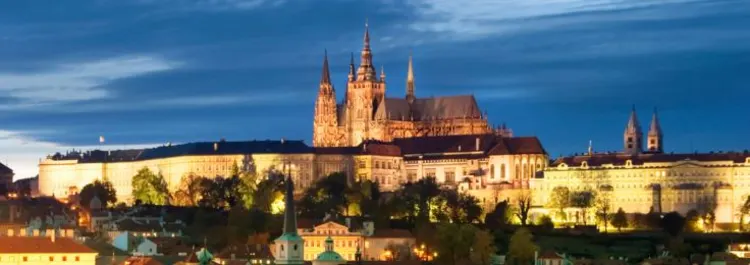
A Glimpse into Prague Castle’s Enigmatic History
Prague Castle, a timeless emblem of European history, stands majestically atop a hill overlooking the enchanting city of Prague, and is one of Czech Republic landmarks. Its commanding presence against the skyline is a testament to the centuries of history that have unfolded within its walls. With its rich and storied past, the castle has served as a symbol of power, culture, and architectural brilliance, casting a spell of awe and inspiration on all who visit.
Steeped in the annals of time, Prague Castle has witnessed the ebb and flow of dynasties, the rise and fall of empires, and the echoes of countless events that have shaped the course of Europe. From its origins as a medieval fortress to its transformation into a seat of royal power and residence, the castle’s architecture bears witness to various historical epochs, seamlessly blending Romanesque, Gothic, Renaissance, and Baroque elements. Its intricate facades, soaring spires, and meticulously crafted interiors stand as a living testament to the artistic and architectural genius of the eras it has survived.
Medieval Origins and Royal Foundations
The roots of Prague Castle can be traced back to the 9th century, making it one of the oldest castles in the world still in use today. Its enduring presence on the historical stage is a testament to the lasting significance it holds in the heart of the Czech Republic. The castle’s inception is a tapestry woven with the rise of the Přemyslid dynasty, whose legacy remains etched into the annals of Czech history. As the sunlit tendrils of time reached back, Prague Castle was born as a wooden fortress, lovingly erected by the visionary Prince Bořivoj.
Standing tall on a hill overlooking the meandering embrace of the Vltava River, the castle’s strategic location was not merely a matter of happenstance. It was a deliberate choice, embodying both the spirit of protection and the art of trade. The castle’s walls were not only intended to ward off potential adversaries but also to facilitate commerce that flowed along the river’s arteries. Through its watchful towers and gateways, the castle kept a vigilant eye on the shifting tides of power, while its position by the river bestowed it with the honour of being a central hub for the exchange of goods, ideas, and culture.
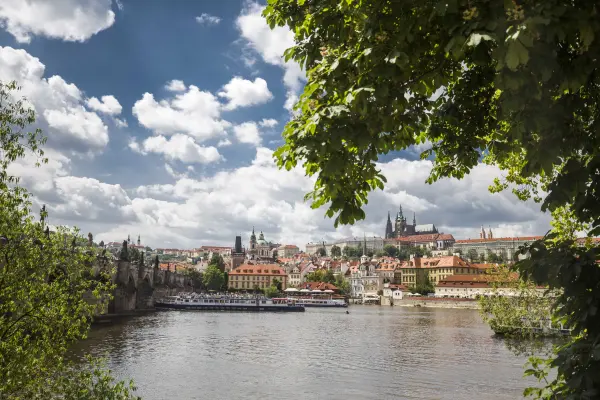
Gothic Splendour and Renaissance Refinement
Over the centuries, Prague Castle underwent numerous historical architecture transformations, reflecting the prevailing artistic trends of the time. During the Gothic era, the castle witnessed the construction of the monumental St. Vitus Cathedral, a masterpiece of religious architecture. The Renaissance period introduced elegant palaces and gardens, exemplifying the fusion of artistic expression and regal grandeur.
Royal Residences and Iconic Kings of Prague Castle
At the heart of Prague Castle’s history lies a lineage of royal residences that iconic kings who not only ruled their realms but also left an indelible mark on the castle’s architecture and cultural significance. Among these legendary rulers, King Charles IV stands as a visionary monarch whose reign illuminated the castle and the entire Bohemian region.
Charles IV’s legacy is interwoven with his commitment to education, intellectual progress, and architectural splendour. Born in 1316, he ascended the throne in 1346 and embarked on a reign that would be remembered as a period of exceptional growth and influence.
As a patron of the arts and culture, Charles IV founded Charles University in 1348, one of the oldest universities in Europe. This institution became a beacon of knowledge, attracting scholars and thinkers from all corners of the continent. The echoes of Charles IV’s devotion to education can still be felt today as Prague Castle and the university remain inseparable parts of the city’s intellectual fabric.
Furthermore, Charles IV’s architectural aspirations found expression in the stunning landmarks that grace Prague Castle’s grounds. The construction of the iconic Charles Bridge, spanning the Vltava River and connecting the castle to the city, remains a testament to his grand vision. Decorated with a series of intricate statues depicting saints and religious figures, the bridge became a symbol of artistic and engineering excellence.
Fast-forwarding to the late 16th century, another exceptional monarch left an indelible mark on Prague Castle. King Rudolf II, whose reign spanned from 1576 to 1612, was a monarch of remarkable cultural sensibilities. His court became a haven for artists, scientists, alchemists, and philosophers, shaping the castle into a hub of creativity and intellectual exchange.
Rudolf II’s fascination with the arts led to the assembly of one of the most remarkable collections of art and curiosities in European history. His patronage attracted luminaries such as the astronomer Tycho Brahe and the mathematician Johannes Kepler, who conducted groundbreaking research within the castle’s walls. Rudolf II’s deep interest in alchemy and mysticism also left an intriguing legacy, with the castle becoming a center for esoteric studies.
The Spanish Hall within Prague Castle serves as a testament to Rudolf II’s opulent tastes and dedication to cultural enrichment. This lavish hall, adorned with breathtaking frescoes, intricate stucco work, and gilded decorations, encapsulates the artistic magnificence that defined his reign. As a collector and promoter of fine arts and intellectual exploration, King Rudolf II further cemented Prague Castle’s role as a beacon of creativity and enlightenment. The Castle District: A Journey through Time
Beyond its regal palaces and cathedrals, Prague Castle encompasses an entire district that encapsulates the city’s evolution. The charming Golden Lane, lined with colourful houses, offers a glimpse into the daily lives of castle residents through the ages. Visitors can explore medieval workshops, artisan studios, and quaint boutiques, creating an immersive experience that bridges the gap between past and present.
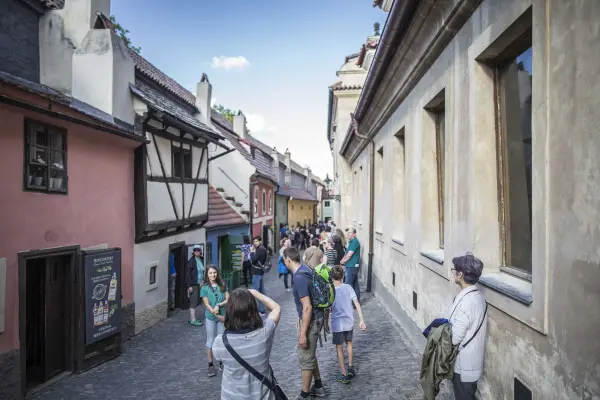
Modern Significance and Cultural Heritage
Perched majestically atop its commanding hill, Prague Castle holds an esteemed place as an enduring symbol of Czech statehood, encompassing a dynamic blend of governance and rich cultural heritage. Beyond its architectural grandeur, the castle serves as an intricate tapestry interwoven with the threads of history, identity, and aspiration. A sentinel of both history and contemporary significance, it remains not just a historical relic, but a living embodiment of the Czech nation’s journey.
Serving as the official residence of Czech presidents, Prague Castle stands as a resolute guardian of the nation’s identity and aspirations. With its towers reaching towards the sky like the aspirations of its people, the castle’s presence is a testament to the Czech spirit that flourishes within its walls.
This spirit was amplified as Czechoslovakia emerged as an independent state after the tumultuous years of World War I. Within the embrace of the castle’s fortified walls, the birth of a sovereign nation took place, evoking a profound sense of unity, determination, and renewed hope among its people.
Today, Prague Castle remains a bastion of continuity, where the whispers of history reverberate through its corridors, reminding all who traverse its storied halls of the struggles, resilience, and triumphs that have forged the Czech identity.
Yet, the castle is not confined to the pages of history. It vibrates with contemporary vitality; a nucleus of diplomatic endeavours where global leaders and dignitaries gather for dialogues that shape the course of international relations. Its sprawling courtyards continue to be the stage for solemn state ceremonies, where the core values and time-honoured traditions of the Czech nation are upheld with solemn reverence.
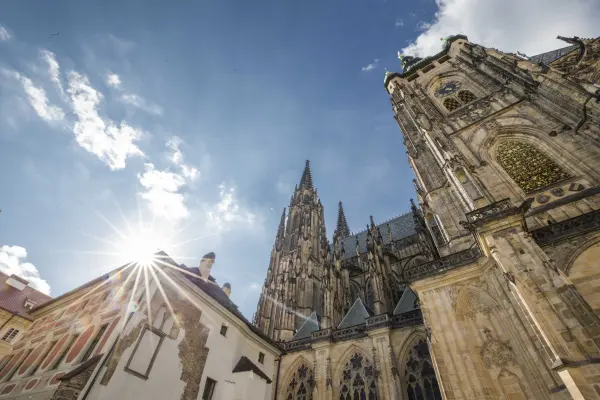
Tourist Destination and Preservation Efforts
Prague Castle’s allure extends beyond its historical importance, captivating the hearts and imaginations of millions of visitors who flock to its storied grounds each year. What makes this venerable fortress a true gem lies not only in its past but in the meticulous preservation of its architectural treasures, like the pages of a living history book brought to life. As one stands in awe of the castle’s soaring spires, labyrinthine corridors, and ornate chambers, it’s a testament to the Czech Republic’s unwavering commitment to safeguarding its cultural legacy for generations to come.
However, the castle’s appeal doesn’t end at its impressive architecture. Its sprawling gardens, akin to meticulously crafted landscapes from a fairytale, provide a tranquil respite amidst the bustling city. These meticulously nurtured green havens, adorned with vibrant flowers, elegant sculptures, and serene water features, offer a sensory escape where history and nature coalesce in harmonious symphony.
As the sun casts its warm embrace over the meticulously maintained grounds, visitors are transported to a realm where time seems to slow down, and the whispers of bygone eras can be heard in the gentle rustle of leaves.
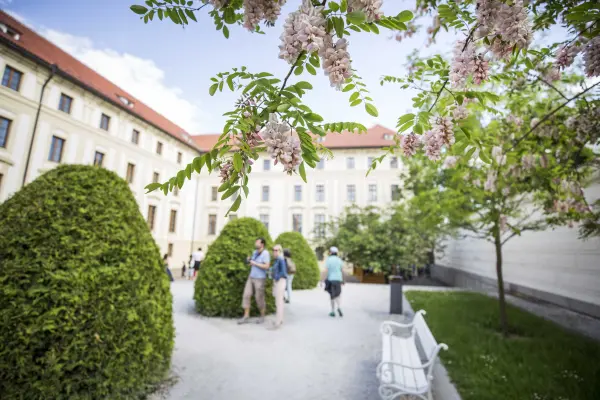
A Timeless Monument of Europe’s Past and Present
Prague Castle stands as a timeless monument, a living embodiment of the intricate interplay between history, architecture, and the unyielding spirit of a nation. Its majestic spires piercing the sky, its opulent halls resonating with echoes of regal power, and its meandering alleys unveiling centuries of secrets, all converge to tell a mesmerizing tale of a city and its people who have both forged and been shaped by their surroundings.
As the sun descends beneath the horizon, casting a warm, golden glow upon the castle’s walls, an enchanting aura envelops Prague Castle. Its very stones seem to whisper stories of monarchs and commoners, artists and scholars, each contributing their unique chapter to the epic narrative of Europe’s history.
From the medieval origins rooted in wooden fortresses to the intricate Gothic cathedrals that reach towards the heavens, the castle’s architectural evolution mirrors the diverse epochs that have graced the Czech lands.
Yet, Prague Castle is more than just an architectural marvel; it is an emblem of the indomitable spirit of a nation. The castle’s history is a testimony to the Czech people’s tenacity, resilience, and unwavering pride.
It has stood witness to triumphs and trials, moments of grandeur and moments of struggle, embodying the very essence of the Czech identity. Its walls have sheltered kings and queens, poets and philosophers, all united by their connection to this hallowed ground.
As day gives way to night, and the flickering lights of the city below illuminate its grandeur, Prague Castle’s allure intensifies. It becomes a canvas upon which the past and present intertwine, creating a tableau of poignant reflection.
The unbreakable thread that binds the castle to the river, the city, and the people is illuminated by the setting sun. It’s a thread that weaves through time, connecting the hopes and dreams of generations long gone with the aspirations and endeavours of those who stand in its shadow today.
Prague Castle, with its aura of timelessness and its role as a sanctuary of history, extends an invitation to all who encounter it. It beckons visitors to traverse its cobblestone paths, to wander through its courtyards, and to contemplate the intricate tapestry of human existence that it represents.
It’s a place where the past, the present, and the future converge in a harmonious symphony, a tribute to the enduring legacy of kings, the evolution of architectural marvels, and the unwavering spirit of a nation.
Prague Castle – FAQ
What is the Prague Castle?
Where is Prague Castle located?
When was Prague Castle built?
What can visitors see at Prague Castle?
How do I get to Prague Castle?
Are there guided tours available?
When is the best time to visit Prague Castle?
Is it wheelchair accessible?
How long should I plan for a visit?
What is the entrance fee?
The entrance fee to Prague Castle depends on the type of ticket you purchase. There are three types of tickets:
- Ticket A: This ticket includes the two churches of St. Vitus and St. George, the Royal Palace, the Golden Lane, the Rosenberg Palace, Daliborka Tower, and much more. It costs 350 CZK (about €14) for adults, 175 CZK (about €7) for children, students, and seniors, and 700 CZK (about €28) for families (up to 5 children).
- Ticket B: This ticket includes only the most important buildings and the Golden Lane. It costs 250 CZK (about €10) for adults, 125 CZK (about €5) for children, students, and seniors, and 500 CZK (about €20) for families.
- Ticket C: This ticket includes Ticket B plus the Prague Castle Picture Gallery and the Lobkowicz Palace. It costs 450 CZK (about €18) for adults, 225 CZK (about €9) for children, students, and seniors, and 900 CZK (about €36) for families.
Children under the age of 6 and disabled persons with a ZTP card can enter Prague Castle for free.
You can buy tickets at the Information Centres of Prague Castle…
You can also buy tickets online at the Prague Castle website: https://www.hrad.cz/en/prague-castle-for-visitors/tickets.
What are the opening hours of Prague Castle?
- April to October: 9:00 to 18:00
- November to March: 9:00 to 16:00